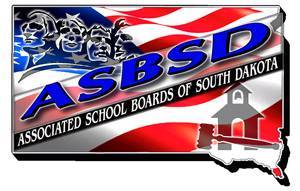Is your district in compliance with the school finance accountability requirements established through the 2016 education funding package?
Download the S.D. Department of Education’s Information on Accountabilities sheet here.
For fiscal year 2017, school districts had two accountability targets to meet related to teacher compensation:
- Total Compensation Accountability – requiring districts to put 85 percent of the new money they received in state aid to increase teacher salaries and benefits;
- Average Teacher Compensation Accountability – requiring districts increase teacher salaries and benefits by the percentage generated from a calculation dividing new money in state aid by a district’s total need and multiplying that figure by 85 percent.
Districts are required to meet both accountabilities in FY17 or they face a penalty of a reduction in state aid by half of the new money they received in FY 2018.
Recently, S.D. DOE announced there are NO accountability targets for FY18. The Total Compensation Accountability will not be counted beyond this year.
However, the Average Teacher Compensation Accountability will again be implemented in FY 2019 and utilized in FY 2020 and 2021 with districts required maintain their own reported FY17 average teacher compensation level.
For FY 19 and beyond, a district may not have its average teacher compensation be less than the level set in FY17. Districts with average teacher compensation less than the level set in FY17 will have their state aid reduced by an amount equal to $500 for each teacher employed in the district.
In addition to the teacher compensation accountabilities districts will have to meet the cash balance caps established in law.
Beginning in FY19, cash balance caps will based on a district’s enrollment and are calculated by using the district’s lowest monthly fund balance of the 12 month period in FY18.
Enrollment tiers for the cash balance caps include:
- Less than 200 students – 40 percent
- 200 to 600 students – 30 percent
- More than 600 students – 25 percent
The tiers will be determined by using the lowest of the current year’s enrollment or the previous two years’ fall enrollments, which prevents a district that is close to the line from fluctuating too frequently between tiers.
Districts not meeting the cash balance caps will have state aid reduced by subtracting the allowable general fund cash balance from the lowest general fund monthly cash balance.
Those districts not able to meet the accountability will have the opportunity to explain their reasons to the School Finance Accountability Board.
Districts can apply to the board for a waiver for the Teacher Compensation Accountabilities and Cash Balance Penalty.
Circumstances for the board to consider a waiver for the Teacher Compensation Accountabilities include:
- Retirement of a Teacher;
- Declining Student Enrollment;
- Change in Budgeted Costs for Benefits;
- An Unanticipated Change in Teacher FTE; or
- Any Un-Foreseen or Extenuating Circumstance.
Circumstances for the board to consider a waiver for the Cash Balance Penalty include:
- Revenue needed in following year(s) due to natural disaster;
- Funding needing to expand educational programs;
- Impact of reorganization; or
- Any Un-Foreseen or Extenuating Circumstance.
SFAB members will review submitted waivers in November with final approval of a submitted waiver left to the South Dakota Legislature’s Joint Appropriations committee.
For updates on school finance accountabilities and the waiver process, check the ASBSD Blog and Twitter feed.
